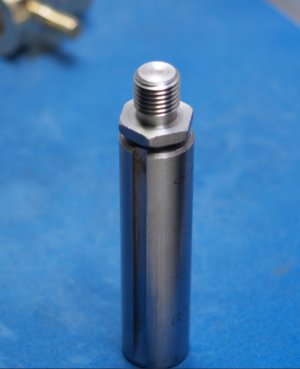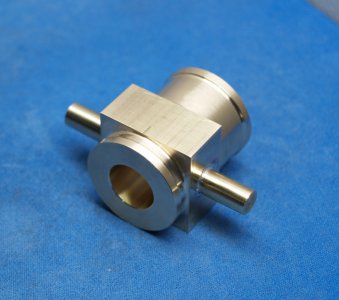- Joined
- Feb 15, 2020
- Messages
- 375
I just managed to damage the tailstock on my 4400 lathe while drilling a hunk of C360 brass. I was using a 3/8" drill to enlarge a hole from 5/16". The lathe did come with a 3/8" drill chuck, it should be able to handle it right? Anyway, the drill hogged into the brass and spun the MT0 chuck adapter in the tailstock ram and seized before I could find the power switch. I realize (now) I was trying to remove over .060" of material in one pass which I normally would not do even though the lathe motor can handle it. Since the parts were welded together already I went ahead and finished drilling the hole.

I got the parts separated but the tapers are ruined.
While I wait for the replacement parts to arrive I'm looking for guidance on how not to do that again. I obviously exceeded what an MT0 can hold. It's also obvious that this is the weakest part of the lathe. What isn't so obvious is how do I know if I'm approaching the limits of what the taper can hold.
Thoughts?
Eric

I got the parts separated but the tapers are ruined.
While I wait for the replacement parts to arrive I'm looking for guidance on how not to do that again. I obviously exceeded what an MT0 can hold. It's also obvious that this is the weakest part of the lathe. What isn't so obvious is how do I know if I'm approaching the limits of what the taper can hold.
Thoughts?
Eric


